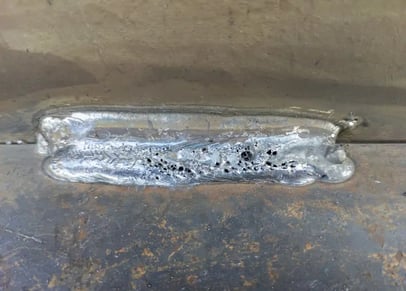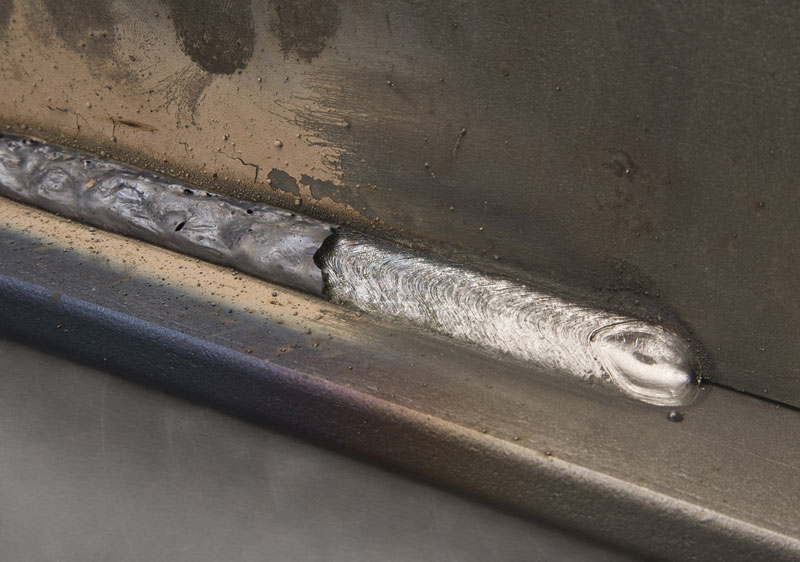Just how to Determine What is Porosity in Welding and Improve Your Strategy
Just how to Determine What is Porosity in Welding and Improve Your Strategy
Blog Article
Comprehending Porosity in Welding: Checking Out Reasons, Results, and Prevention Methods
Porosity in welding is a consistent obstacle that can substantially impact the top quality and stability of welds. As specialists in the welding industry are cognizant, recognizing the reasons, impacts, and avoidance methods related to porosity is essential for attaining durable and reputable welds. By diving into the origin of porosity, examining its detrimental effects on weld top quality, and checking out effective prevention approaches, welders can improve their understanding and abilities to produce top notch welds consistently. The elaborate interplay of elements adding to porosity needs an extensive understanding and a positive approach to ensure effective welding results.
Usual Sources Of Porosity
Contamination, in the kind of dust, oil, or corrosion on the welding surface area, creates gas pockets when warmed, leading to porosity in the weld. Incorrect securing happens when the protecting gas, typically utilized in processes like MIG and TIG welding, is unable to totally shield the liquified weld swimming pool from reacting with the surrounding air, resulting in gas entrapment and subsequent porosity. In addition, insufficient gas protection, commonly due to wrong flow rates or nozzle positioning, can leave components of the weld vulnerable, allowing porosity to create.
Results on Weld Top Quality
The presence of porosity in a weld can dramatically jeopardize the overall top quality and integrity of the bonded joint. Porosity within a weld develops voids or cavities that damage the structure, making it extra susceptible to fracturing, corrosion, and mechanical failing.
Moreover, porosity can prevent the effectiveness of non-destructive testing (NDT) methods, making it testing to identify other problems or gaps within the weld. This can bring about substantial security problems, especially in crucial applications where the architectural honesty of the welded parts is extremely important.

Avoidance Techniques Summary
Offered the harmful influence of porosity on weld high quality, effective prevention methods are vital to preserving the architectural honesty of welded joints. In addition, selecting the appropriate welding specifications, such as voltage, existing, and take a trip rate, can help lessen the danger of porosity development. By including these avoidance methods into welding techniques, the event of porosity can be considerably lowered, leading to stronger and more reputable bonded joints.
Relevance of Proper Shielding
Proper shielding in welding plays a crucial role in preventing atmospheric contamination and making sure the integrity of welded joints. Shielding gases, such as argon, helium, or a mix of both, are generally used to safeguard the weld swimming pool from reacting with components in the air like oxygen and nitrogen. When these reactive elements come into call with the hot weld pool, they can create porosity, leading to weak welds with click to read reduced mechanical homes.

Poor protecting can cause various flaws like porosity, spatter, and oxidation, jeopardizing the structural honesty of the bonded joint. Sticking to proper securing techniques is necessary to generate high-grade welds with marginal problems and make sure the durability and reliability of the welded elements.
Surveillance and Control Methods
How can welders effectively check and manage the welding process to make sure optimal outcomes and prevent issues like porosity? One secret approach is via using innovative tracking innovations. These can include real-time monitoring systems that give comments on specifications such as voltage, present, take a trip rate, and gas circulation prices. By continuously monitoring these variables, welders can recognize deviations from the perfect problems and make immediate adjustments to avoid porosity development.

In addition, executing appropriate training programs for welders is necessary for keeping an eye on and regulating the welding process successfully. What is Porosity. Informing welders on the value of preserving regular specifications, such as correct gas why not try this out securing and take a trip speed, can aid avoid porosity issues. Routine evaluations and qualifications can also guarantee that welders are skillful in surveillance and controlling welding processes
In addition, the usage of automated welding systems can boost tracking and control capacities. These systems can specifically control welding specifications, lowering the likelihood of human mistake and ensuring regular weld quality. By integrating innovative tracking innovations, training programs, and automated systems, welders can properly keep an eye on and manage the welding procedure to lessen porosity flaws and attain top quality welds.
Verdict

Report this page